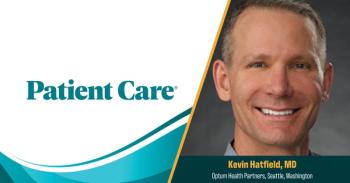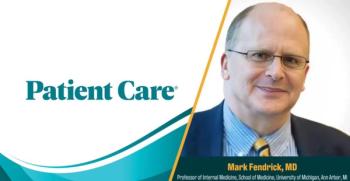
Conversations at The Family Medicine Experience (FMX) 2025: John Anderson, MD and Charles Vega, MD
Anderson and Vega discuss CGM use in primary care, obesity management, immunization challenges, and cognitive decline in older adults.
Patient Care© was in Anaheim, CA, during the 2025 FMX conference in October. We spoke with many of the family medicine and other primary care clinicians who presented educational sessions on the myriad of conditions seen by frontline practitioners every day. Some presenters spoke on more than 1 topic. For this edition of Patient Care we chose excerpts from our interviews with 2 clinicians for the range of common clinical encounters they represent: diabetes and continuous glucose monitoring, obesity management, immunization challenges, and cognitive decline in older adults.
John E Anderson, MD
The Frist Clinic
Nashville, TN
Charles P Vega, MD
Clinical Professor, Family Medicine
Assistant Dean, Cultural & Community Education
UC Irvine School of Medicine
John E Anderson, MD
Is Continuous Glucose Monitoring Optimized in Primary Care?
Patient Care: I want to first talk about the evolution of continuous glucose monitoring (CGM) over the past 10 to 15 years, and how it's actually impacting clinical outcomes?
John Anderson, MD: It's a great question, because glucose monitoring started with blood glucose finger sticks, and even before that, urine test strips. All our patients were trying to do blood glucose finger sticks to try to check glucose. If you're on an intensive insulin regimen, that means 4 to 6 finger sticks a day at minimum. Then we saw an evolution of fairly clumsy CGMs, followed by better, more sophisticated monitors, but they still required needle sticks and were uncomfortable for patients. We’ve now moved past that to sensors that are painless, easily applied, and extraordinarily accurate. The 2 main ones on the market right now, aside from the MiniMed sensor for its pump, are the Dexcom G6 and G7, as well as the Abbott FreeStyle Libre.
PC: What is your assessment of how family and other primary care clinicians are currently integrating CGM into routine diabetes care?
Anderson: We're really lagging behind the standards of care. Ninety percent of people with type 2 diabetes in this country are cared for in the primary care community. CGM is being adopted, partly because there’s a lot of patient demand. I think when primary care clinicians see the success rate of behavior modification and change [driven by CGM], they're adopting it. But at a program we did last night, there was still a sense of "I'm not familiar with it," and "I'm not sure how to interpret the data," so we still have a lot of education to do, especially regarding how to interpret an ambulatory glucose profile, which is a standardized glucose profile. We need to get better at looking at the highs and lows, pinpointing danger points, and improving therapy. There's still a way to go.
PC: For family physicians who are more familiar with traditional finger stick monitoring, what's the most challenging aspect of the learning curve when it comes to interpreting CGM data?
Anderson: The real limitation is they just haven’t done it before. But let me tell you, it is way easier to use than trying to go through a blood-stained little notebook of finger stick glucoses values from patients who may or may not be recording these accurately. I want to tell all my colleagues: you can learn how to do this—there are a lot of resources out there on websites, having you walk through the ambulatory glucose profile (AGP). Once you’ve done it a few times, it becomes second nature. It really does. It’s not that difficult, and the patient’s profile makes complete sense when you look at the AGP from midnight to midnight, at 6 a.m., again at noon, at 6 p.m., and you see the changes throughout the day. You can see the highs and lows, spot if it's a narrow or wide variability in the pattern. It’s just got to be done a few times; you’ll go, "Aha!" You'll have an “aha moment.”
Is Obesity Understood As a Disease in Primary Care?
PC: The understanding of obesity as a distinct and complex pathophysiology is moving at a rapid pace. Do you feel that understanding is being fully appreciated at the primary care level yet?
Anderson: There’s still educational work to do. I do think it is being appreciated at the primary care level on an increasing basis, but there’s still stigma, there are clinicians who still play the patient blame game. We now know that obesity is a chronic, relapsing, and progressive disease associated with multiple comorbidities and mortality. All the societies, from the American Diabetes Association to all the obesity societies, are sounding the alarm, especially now that we understand some of the pathophysiology: once you reach a certain amount of weight loss, your body fights you. Even when a patient reaches a 5% weight reduction, hormones kick in, inflammatory conditions occur, satiety goes down, metabolic rates drop. Patients are really fighting against their own physiology in this disease. That’s why I feel like it’s a remarkable time in my practice; I actually have something meaningful to offer them in the new antiobesity medications.
PC: How should the frontline clinician approach the person who has obesity and has tried everything and for years and without success to achieve and maintain weight loss? What is the patient selection process like for treatment?
Anderson: When the patient sits down, I ask permission to talk about their weight and the obesity problem. That’s important, because of the stigma we just talked about. If I get the patient engaged, and as you said, they may have tried 100 different things by the time we have this conversation, I start at the beginning: "What have you tried?” Ask about lifestyle, the low-hanging fruit. “What does an average day look like?” “What can we change?" Remember, we've only got 15 to 20 minutes at best. We need partners, for example, diabetes care and education specialists, dieticians, behavioralists, PharmDs, and others, to weigh in and provide resources. I’m not going to be a dietary expert, not in a 15-minute visit. Sometimes a patient needs an hour and a half with someone who has expertise. We need colleagues; it has to be a team game. But we have to get buy-in from the patient first, about simple lifestyle changes. If those aren’t working and the patient comes in frustrated, maybe talking about medical therapies earlier is better. Most of us in primary care have had these patients for a long time, so we've been down this road historically with them. With the new therapies, the conversation is getting a lot quicker.
Charles P Vega, MD
How are Shifts in Vaccine Policy Impacting Family Medicine?
PC: On the topic of immunization in the US: How do you see the recent fairly radical shifts in government vaccine recommendations impacting confidence and trust, first among patients, and then among clinicians?
Vega: Vaccines are science. They’re some of the best science we’ve ever created as human beings, and it’s very sad to see that science politicized. Vaccines aren’t for everybody; I respect patients’ beliefs, but I don’t want to see those beliefs clouded by stories that just aren’t true, whether that’s "they’re the most effective things ever and you’ll live forever" or "they’re harmful and the devil’s work." What it comes down to is me as a clinician developing trust with patients so that they understand what I’m trying to say, comparing the benefits and downsides of vaccines, and then they can go out and making an informed decision. Patients need a trusting relationship with their clinician; we can help guide them through the benefits and the downsides.
PC: How do you feel the level of trust among physicians is affected by the current environment?
Vega: I understand when patients have questions—they're not trained. But now, when I have to start questioning things as a physician and I'm not sure what's true myself anymore, that’s when we’re really upside down. It makes things harder, because I only have so much time in the day to focus on these things, and I really depend on guidelines. I’m not an independent vaccine expert. There are really good people who have spent their whole careers on this, and that’s who I want to hear from—those are the folks I trust when it comes to making solid vaccine recommendations, and I'm going to follow those recommendations as best I can.
PC: Have you seen in your practice an uptick in hesitancy to be vaccinated, among adults for themselves or among parents to vaccinate their kids?
Vega: Yes, both. The interesting thing about my practice is it's 80% Spanish-speaking, which is a group that has not traditionally had high rates of vaccine hesitancy. This is a population that likes injection therapy; that’s part of health care in Latin America, whether you're talking about injectable antibiotics or vaccines. It's really been something new and sad for me, these folks who are at highest risk, because these are your service folks, doing essential jobs, exposed a lot, now have doubts. They're hearing misinformation, and they're refusing vaccines too. It's just really a shame. It's totally new for me in the past few years.
Family Medicine Clinicians Can See Cognitive Decline Early
PC: How often in the space of a month in your practice do you see a patient experiencing some level of cognitive impairment? Has the frequency changed over the last decade?
Vega: I probably have 1 or 2 cases per week. It’s often patients I known over time, and I just see a difference. Even in the interview, they may have word-finding hesitancy, poor memory about getting labs drawn, which hospital did you go to when you went to the emergency room 2 months ago. I see it routinely, and I see it more often, because my population is getting older along with myself. It's a real thing; if primary care looks for it and keeps it front of mind, they're going to find a lot of cognitive impairment among their patients.
PC: There’s been a huge increase in focus on early detection, with a clarion call to primary care to step up clinical assessment. How well prepared do you think family and other primary care physicians are for this sort of pressure?
Vega: I'm hopeful, because we have that trusting relationship with patients. And we have 2 big advantages. One, we know how the patient was functioning a few years ago, because they were already in our practice. So, if the patient is forgetting appointments, missing medications, missing lab tests or specialist consults—when they were always on top of that before—that's a concern. The other thing is we have access to family members, especially for older adults. I have adult children bringing in their parents, and they’ll voice concerns independently. The parents might deny it, but the adult children do have a voice.
PC: Has there been any effort to create better guidelines for primary care to follow, or are they still very specialist-focused?
Vega: Specialty societies say screen for us. The American Academy of Neurology says screen at age 65 and then annually. Medicare says do an annual wellness visit with a screen for cognitive impairment. But the Preventive Services Task Force finds insufficient evidence to support it. And, in part, that's because when they developed that guidance, there wasn't quite as much we could do. Now we have anti-amyloid therapy, somewhat more effective, a disease modifying therapy, so that may change opinions. Especially when we can see a better link between screening and improved outcomes, like cognition over time—I think that's a goal everybody wants, especially for our older adults.
Newsletter
Enhance your clinical practice with the Patient Care newsletter, offering the latest evidence-based guidelines, diagnostic insights, and treatment strategies for primary care physicians.




















































































































































































































































































